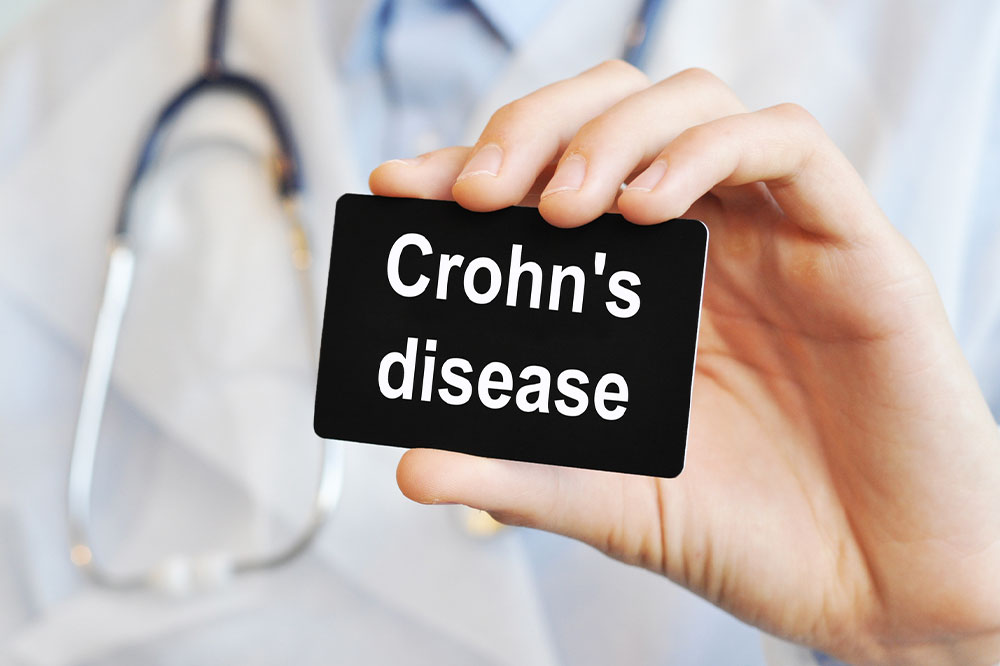
Crohn’s disease – Causes, symptoms, and management
Crohn’s disease is a chronic condition that leads to inflammation in the digestive tract. It leads to severe pain and other symptoms, which can be managed through various treatments. Common symptoms of Crohn’s disease are pain, discomfort, and intestinal ulcers. Most cases of Crohn’s are diagnosed before the patient turns 30, although it can happen at any age. Keep reading to learn more about the symptoms, causes, and management options for Crohn’s disease.
Causes
Experts are yet to find out the exact causes of Crohn’s disease. Stress and nutritional habits were suspected causes once, but currently, the doctors believe that though these factors tend to worsen the condition, they are not the actual contributing factor. Some other factors believed to be causing Crohn’s disease are listed below.
- Genetics – Crohn’s disease is more prevalent in people whose family members have this disease. Hence, genes make people more susceptible to having it. However, research indicates that only around 15% of affected individuals have a first-degree family member with the condition.
- Immune system – Experts believe certain bacteria or viruses may trigger Crohn’s disease, but they are yet to identify a trigger factor. When the immune system fights environmental triggers or invading microorganisms, an unusual response occurs that causes the immune system to attack the healthy cells in your digestive tract. For this reason, Crohn’s disease is considered an autoimmune disorder.
Risk factors
Some risk factors associated with Crohn’s disease are listed below.
- Age – Even though the disease may occur at any age, it is common in people under 30.
- Family history – A person’s risk is higher if any first-degree relative has the disease.
Symptoms
Crohn’s disease may target any part of your large or small intestine. It might be continuous or involve several segments. In some people, the illness is limited to the colon, a part of the large intestine. Furthermore, the symptoms may range from mild to severe. They develop gradually and may come without warning. Usually, people with Crohn’s disease might experience severe flare-ups followed by periods of mild or no symptoms. Hence, there is no definite way to assess when flare-ups will occur. Some common symptoms include-
- Anal fissures – Drainage or pain around or near the anus caused by inflammation
- Body mass loss
- Chronic diarrhea
- Fever
- Abdominal pain
- Skin tags on the buttocks
- Loss of appetite
- Rectal bleeding
- Fatigue
- Abdominal cramps
- Mouth sores
Other symptoms
Some people with the more severe form can experience symptoms beyond the intestinal tract. These include-
- Anemia or iron deficiency
- Kidney stones
- Inflammation in bile ducts or liver
- Inflammation of the joints, eyes, and skin
When to consult a doctor?
One must consult a healthcare professional when one experiences persistent changes in bowel habit or if one experience the below-listed symptoms-
- Unexplained body mass loss
- Vomiting
- Nausea
- Blood in the stool
- Abdominal discomfort
- Diarrhea that does not go on for over two weeks
- Fever, together with the symptoms mentioned above
Diagnosis
A health expert will inquire about your symptoms and conduct a physical examination, which may show a lump in the abdomen caused by loops of inflamed bowels that stick together. The following tests are suggested for diagnosing Crohn’s disease-
- Biopsy, wherein the doctor collects a tissue sample during colonoscopy or endoscopy to get a closer look into the intestinal tract.
- Stool test to check for the presence of blood in the gastrointestinal tract.
- Blood tests to look for plausible indicators of issues like inflammation and anemia
- Sigmoidoscopy or colonoscopy to examine and get a clearer picture of the large intestine.
- CT scan and MRI to see the specific organ and tissue areas
- Endoscopy to get a better picture of the upper gastrointestinal tract
- Balloon-assisted enteroscopy, wherein the doctor uses a scope alongside an overtube to look into areas of the smaller bowel where normal endoscopes cannot reach
Treatment options
Unfortunately, no treatment options can cure Crohn’s disease, but surgery can help patients lead normal life. Approximately 66-75% of people with the disease require surgery. It helps with complications when other prescription remedies or immune system suppressors do not work. Some common procedures include-
- Resection – During this procedure, the surgeon will remove the bowel’s damaged part and then join the two healthy ends. People are usually symptom-free for years after this procedure; however, this is not a cure, as the disease might reoccur at the connection site.
- Ileostomy – This procedure might help if you have a damaged rectum and the doctor cannot use it for connecting the healthy ends. As part of this procedure, the doctor will connect the torso skin to the intestine skin. It leads to a skin opening to collect waste products in a pouch that one can empty.




